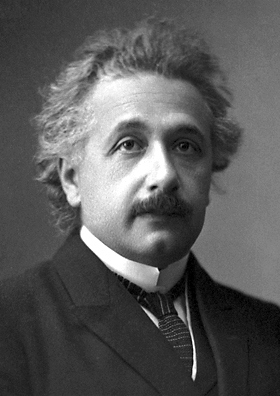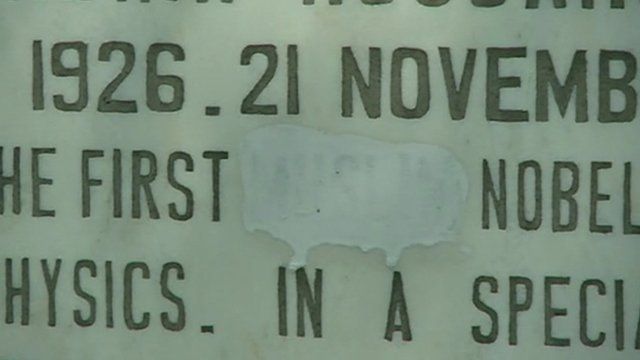Source: HuffPost, Mar 2014

When he finally won the 1921 Prize (awarded in 1922), he did not win for his most famous achievement, Relativity Theory, which was still deemed too speculative and uncertain to endorse with the Prize.
Instead, he won for his 1905 proposal of the law of the photoelectric effect and for general “services to theoretical physics.” It was a political decision by the Nobel committee;
Einstein was so renowned that their failure to select him had become an embarrassment. However, the only part of his brilliant portfolio that they either understood or trusted sufficiently to name for the award was this relatively minor implication of his 1905 paper on particles of light.
The final irony in this selection was that, among the many controversial theories that Einstein had proposed in the previous 17 years, the only one not accepted by almost all of the leading theoretical physicists of the time was precisely his theory of light quanta (or photons), which he had used to find the law of the photoelectric effect!
two other “no-brainers,” the two theories of relativity. The Special Theory, proposed in 1905, introduced the Principle of Relativity, which states that the law of physics must all be the same for bodies in uniform relative motion.
This implied the radical notion that time itself does not pass uniformly for all observers. However, here it must be noted, that the equations of Special Relativity were first written down by Hendrik Lorentz, the great Dutch physicist whom Einstein admired the most of all his contemporaries.
Lorentz just failed to give them the radical interpretation with which Einstein endowed them; he also failed to notice that they implied that energy and mass were interchangeable (E = mc2). Einstein would have been happy to share Special Relativity with Lorentz, so let’s split this one 50-50 between the two.
On the other hand, General Relativity, germinated in 1907 and completed in 1915, is all Albert.
Like the photon, no one on the planet even had an inkling of this idea before Einstein. Einstein realized that the question of the relativity of motion was tied up with the theory of Gravity. From this simple seed of an idea, arose arguably the most beautiful and mathematically profound theory in all of physics, Einstein’s Field Equations.
These predict that matter curves space and that the geometry of our universe is non-Euclidean in general. This one is probably worth two Nobel prizes, but let’s just mark it down for one.
Here we exhaust what most working physicists would immediately recognize as Einstein’s works of genius, and we’re only at 2.5 Nobels. But it is a remarkable fact that Einstein’s work on early atomic theory — what we now call quantum theory — is vastly underrated.
This is partially because Einstein himself downplayed it. He famously rejected the final version of the theory, dismissing it with the famous phrase, “God does not play dice.“ But if one looks at what he actually did, the Nobels keep piling up:
After Einstein proposed his particulate theory of light in 1905, he came up with a mathematical proof that particle and wave properties were present in one formula that described the fluctuations of the intensity of light. In 1923, the French physicist Louis de Broglie hypothesized that electrons actually had wavelike properties similar to light. He freely admitted his debt to Einstein for this idea, but when he got the Nobel Prize for “wave-particle” duality in 1929, it was not shared. It should have been. Another half for Albert, at 3.5 and counting.
In 1916, three years after Niels Bohr introduced his “solar system“ model of the atom, where the electrons could only travel in certain “allowed orbits” with quantized energy, Einstein returned to thinking about how atoms would absorb light, with the benefit of Bohr’s picture. He realized that once an atom had absorbed some light, it would eventually give that light energy back by a process called spontaneous emission. Without any particular event to cause it, the electron would jump down to a lower energy orbit, emitting a photon. This was the first time that it was proposed that the theory of atoms had such random, uncaused events, a notion which became a second pillar of quantum theory. In the same work he introduced the principle of stimulated emission, the basic idea behind the laser. One full Prize, please.
In 1924, Einstein received a paper about particles of light out of the blue from the unknown Indian physicist, Satyendra Nath Bose. Although Bose did not clearly state his revolutionary idea, reading between the lines, Einstein detected a completely new principle of quantum theory — the idea that all fundamental particles are indistinguishable. Einstein applied the principle to atoms and discovered that a simple gas of atoms, if sufficiently cooled, would cease to obey all the laws that physicists and chemists had discovered for gases over the centuries. It turns out that this discovery underlies some of the most dramatic quantum effects, such as superconductivity. No knowledgeable physicist would dispute that Einstein deserved a full Nobel Prize for this discovery, but I am sure that Einstein would have wanted to share it with Bose (who never did receive the Prize).











